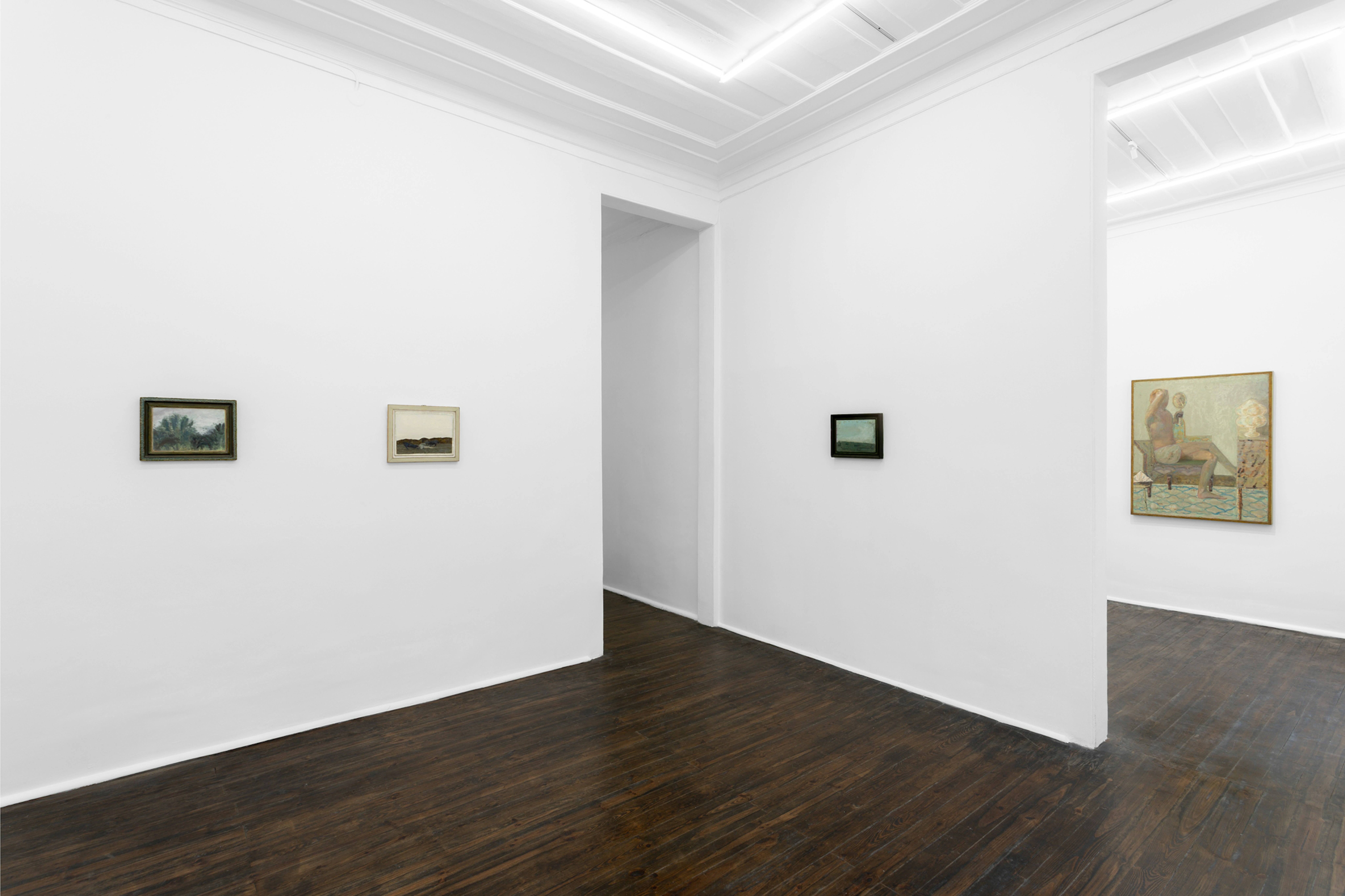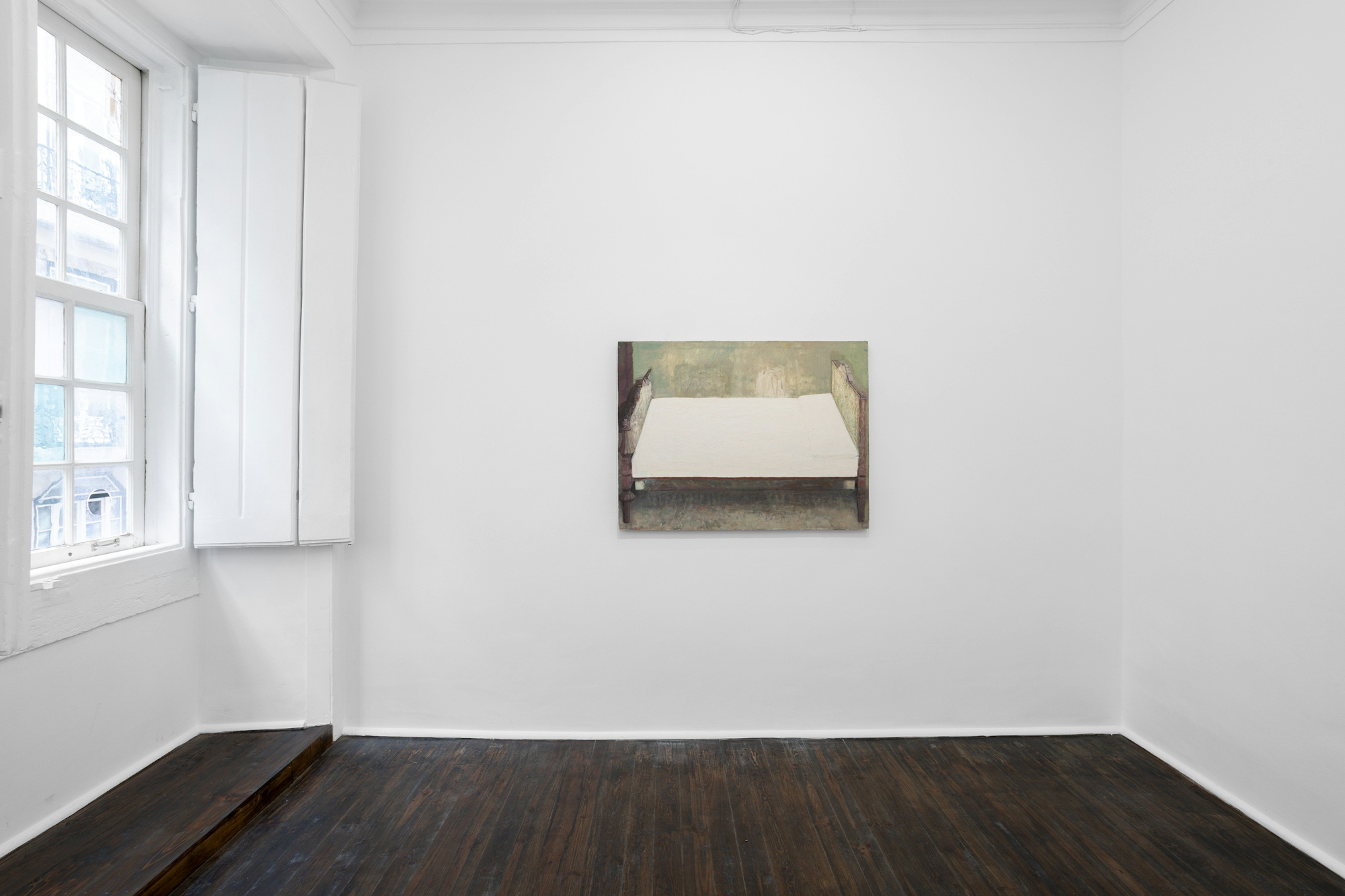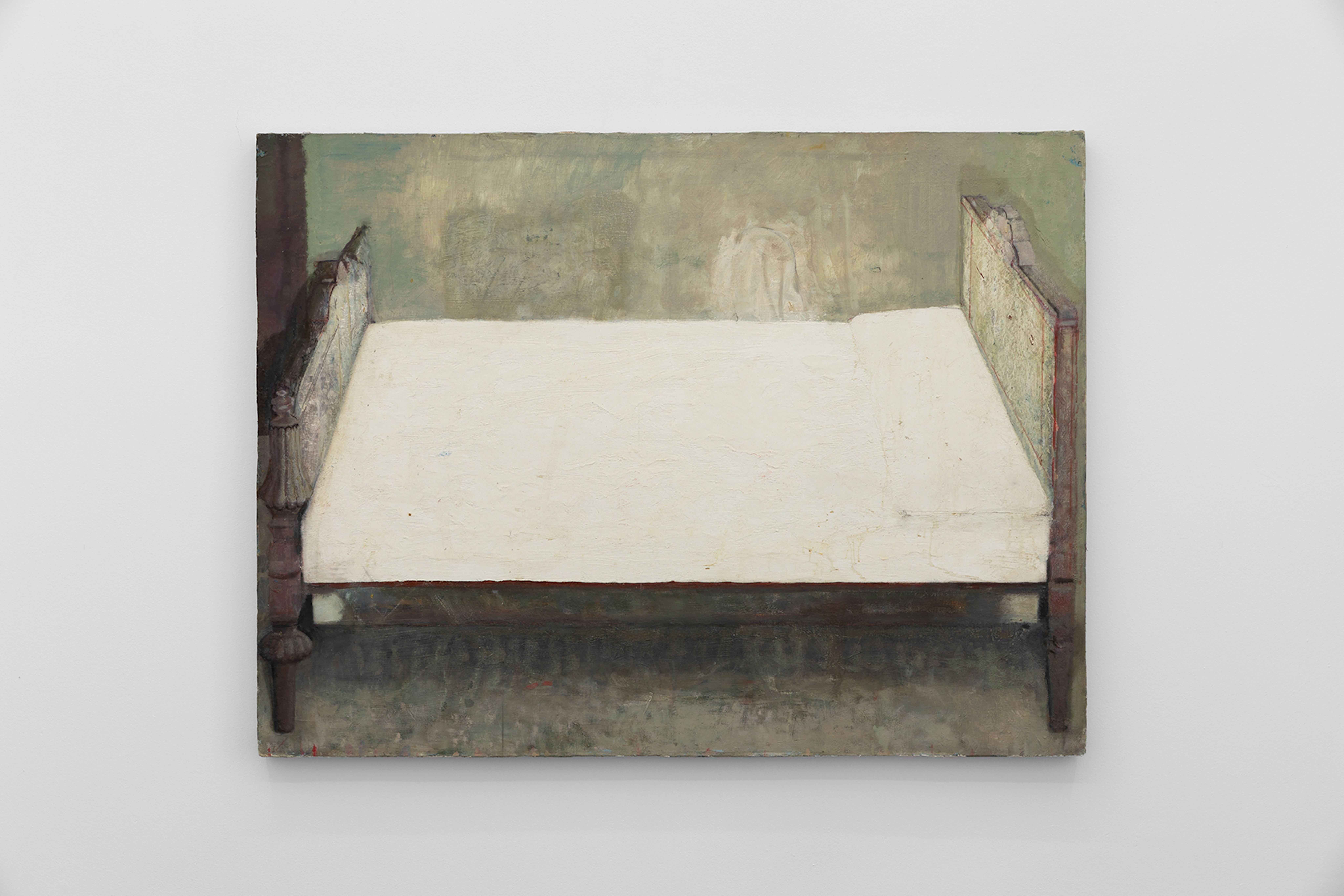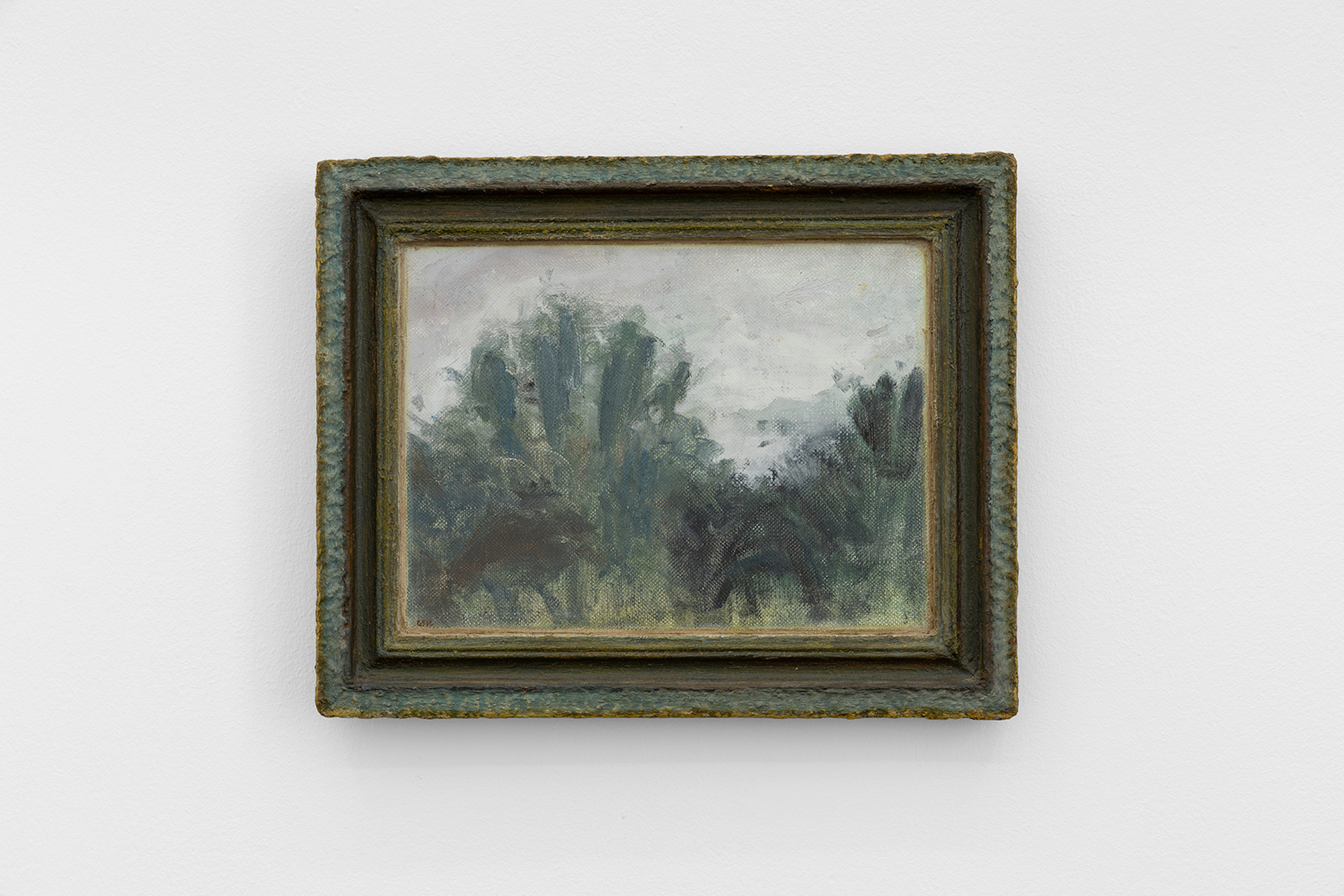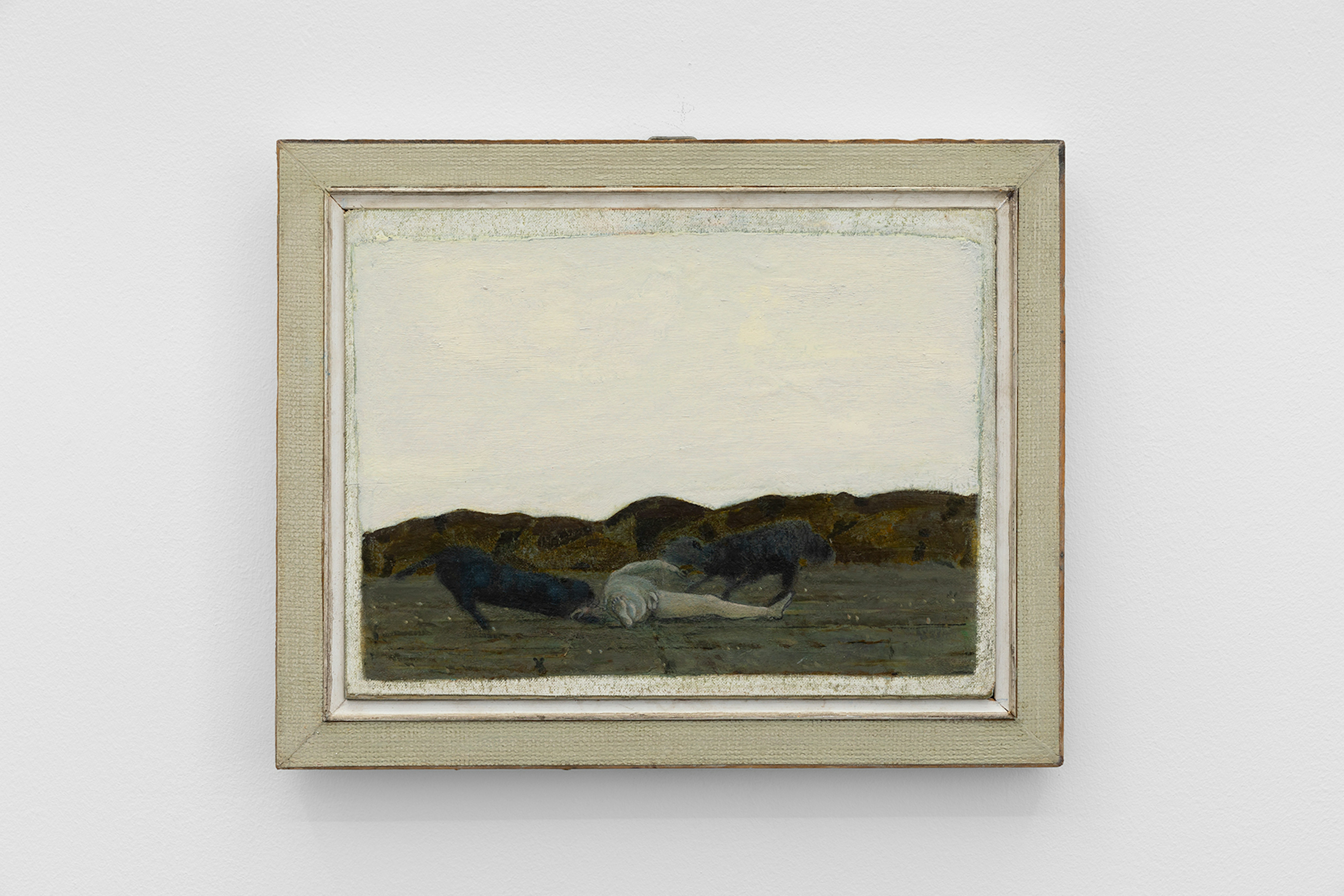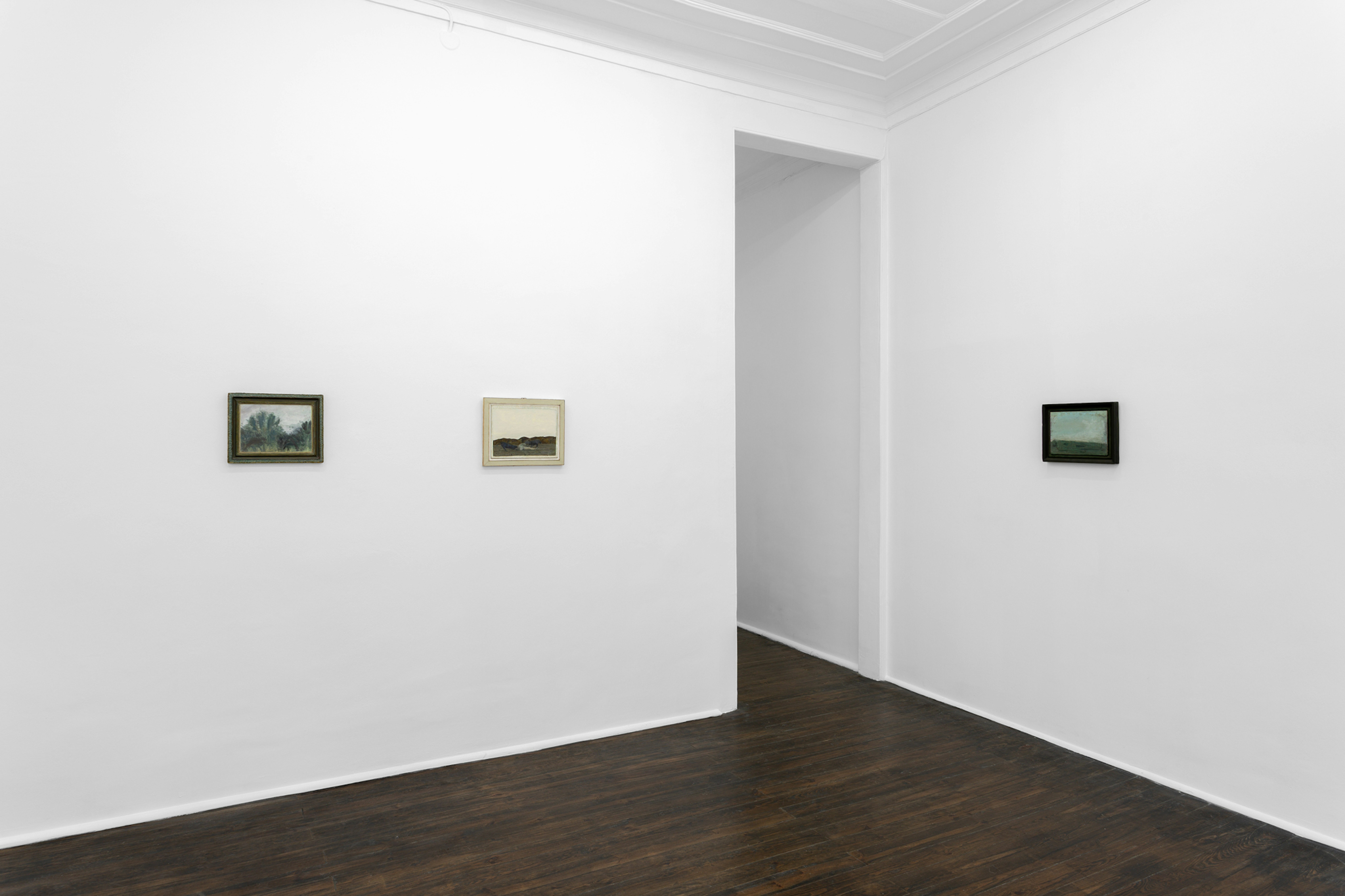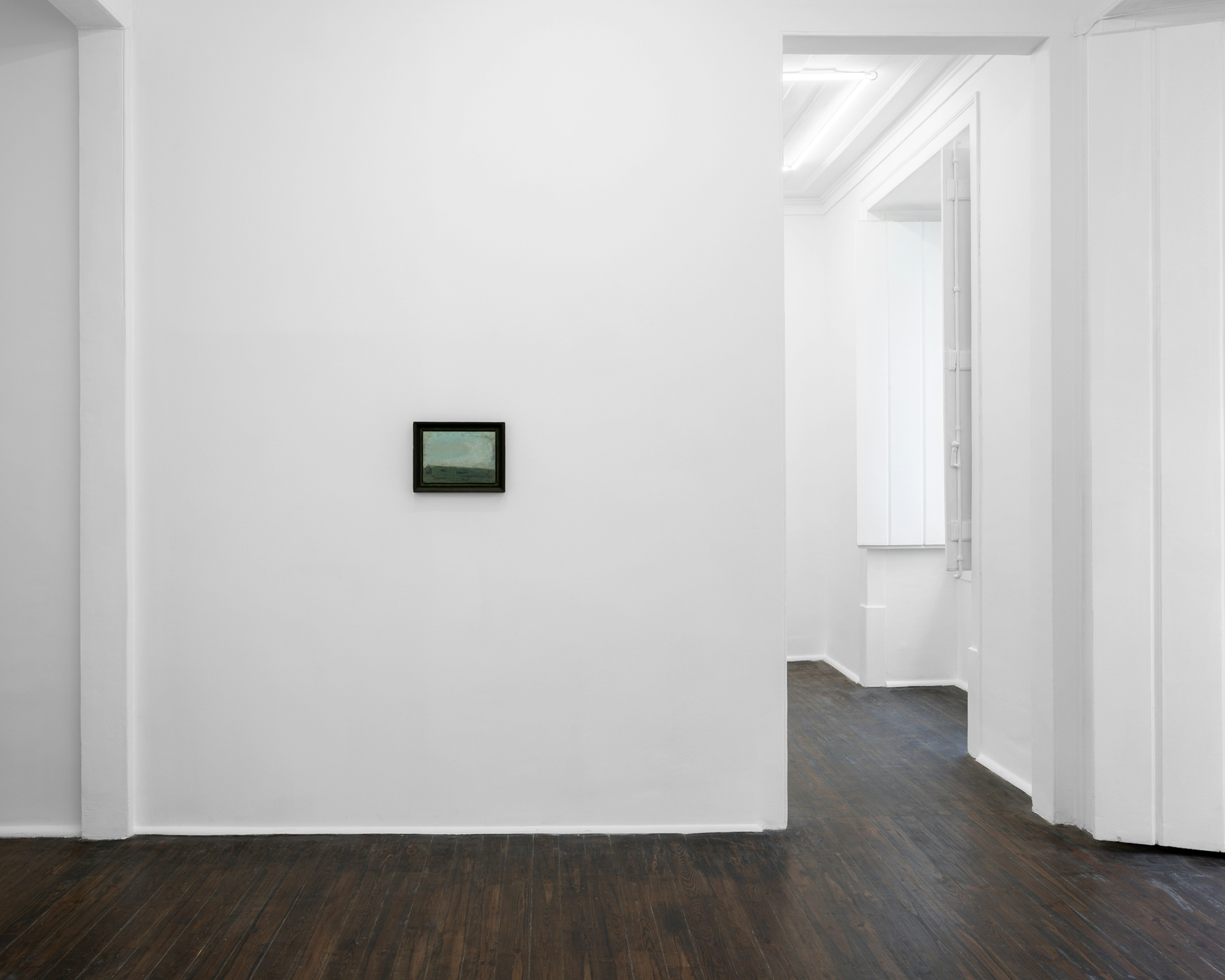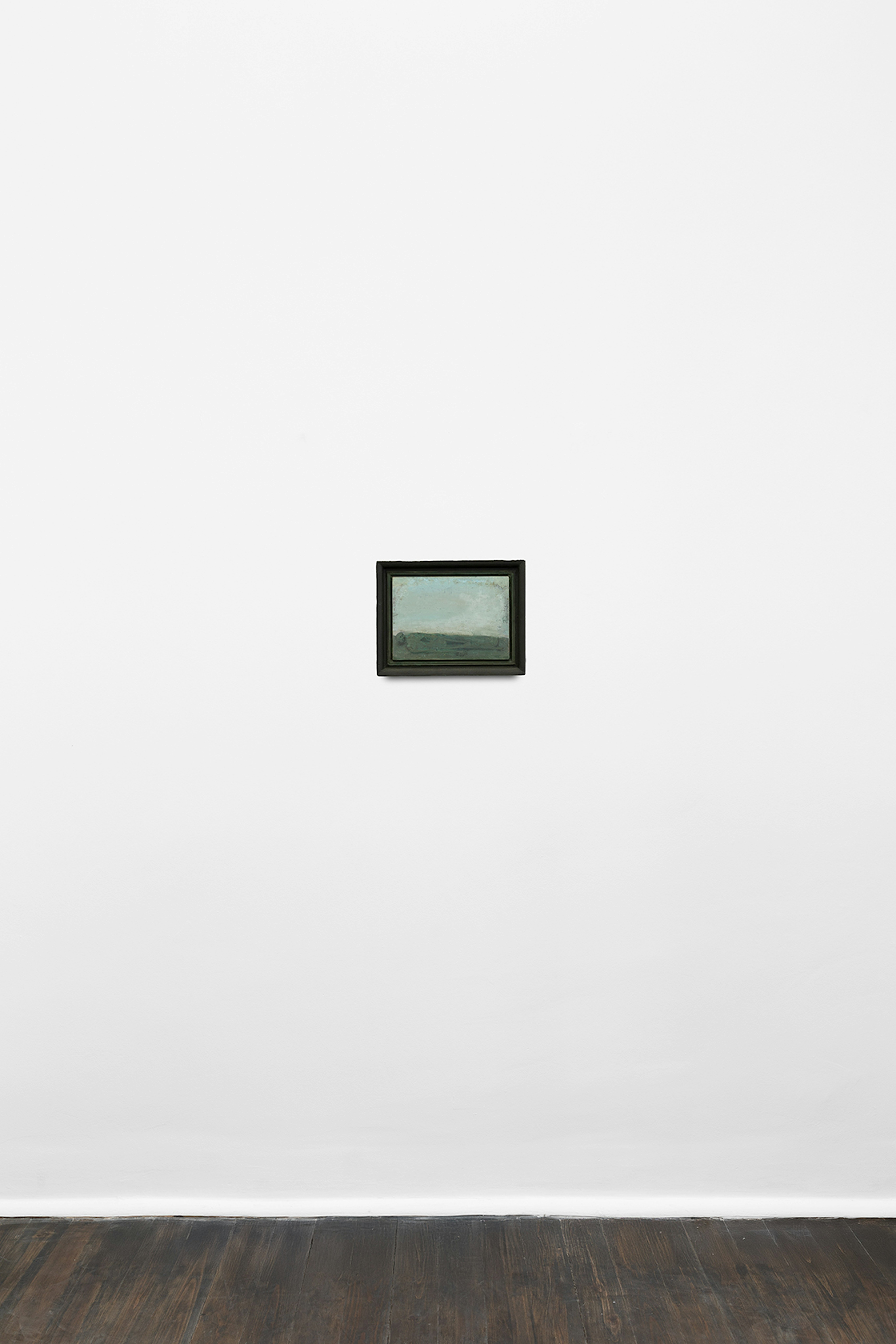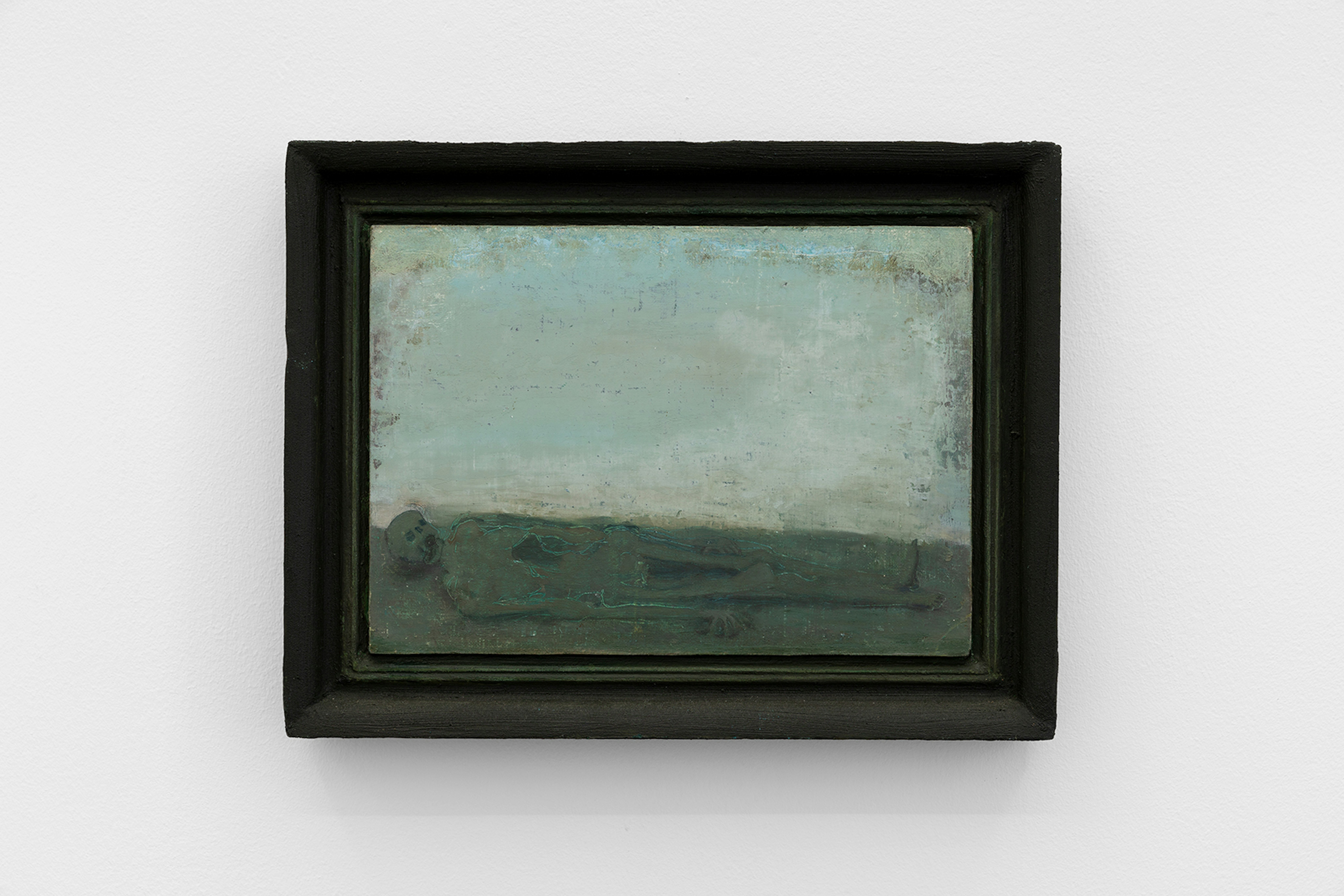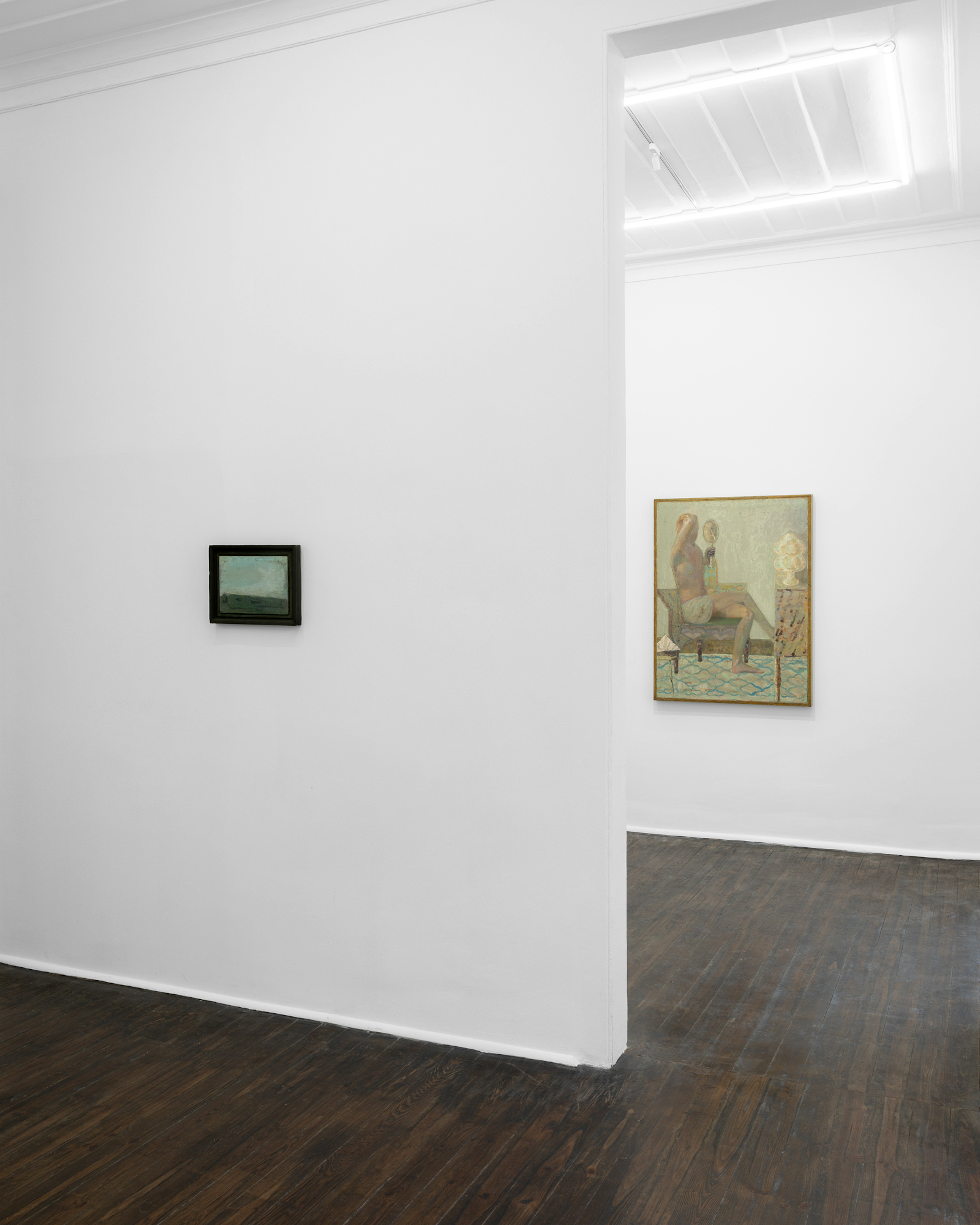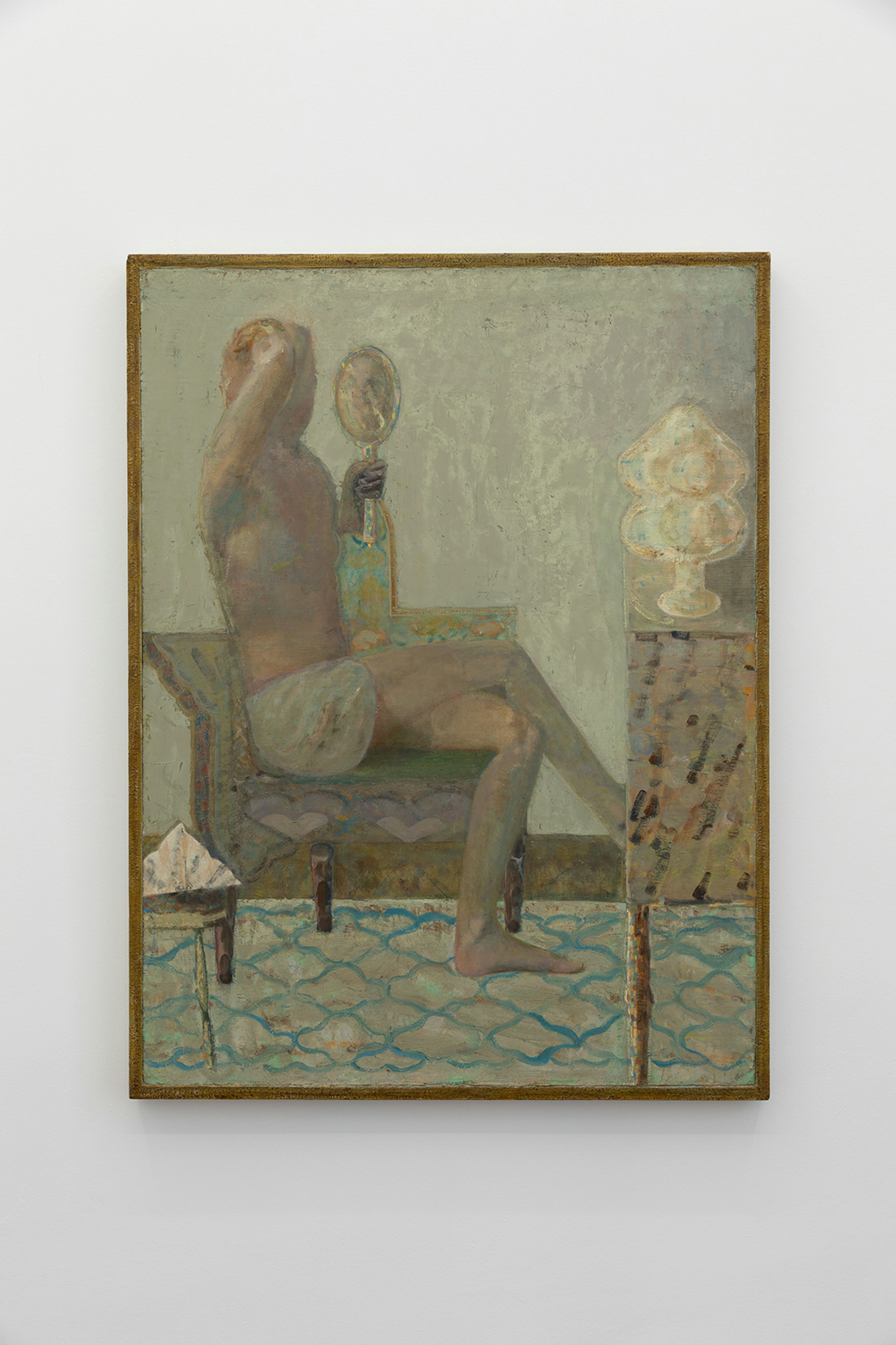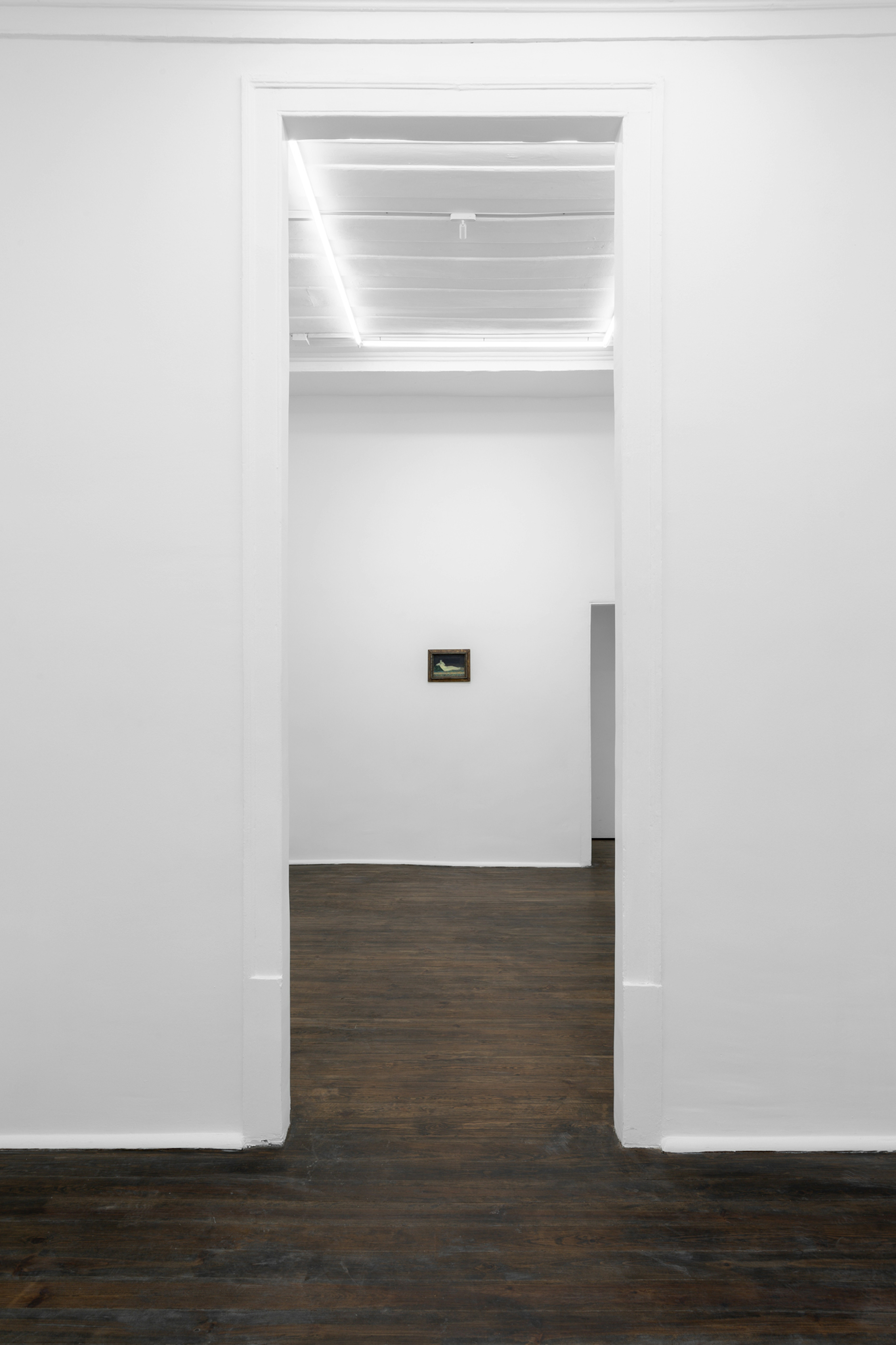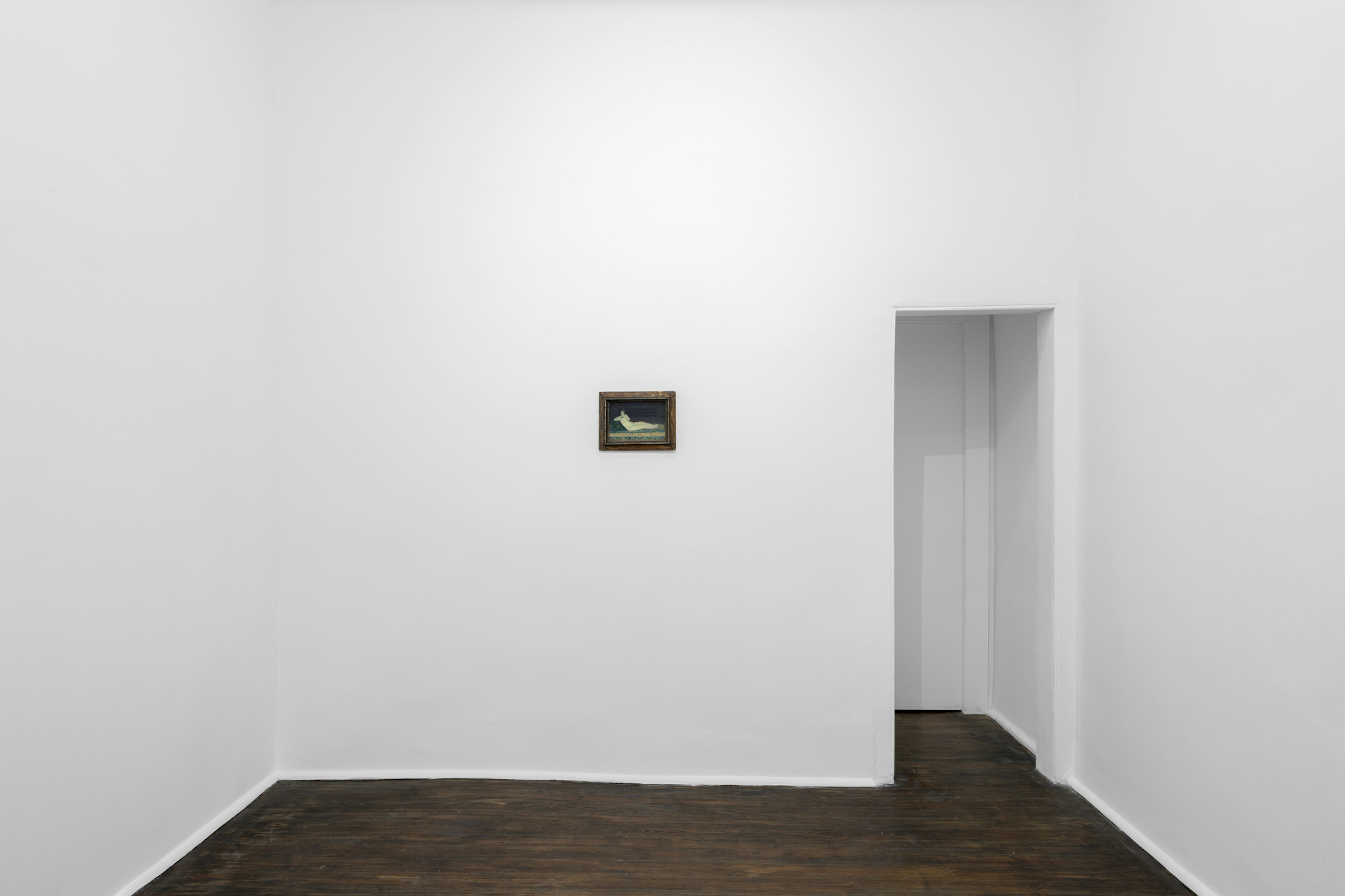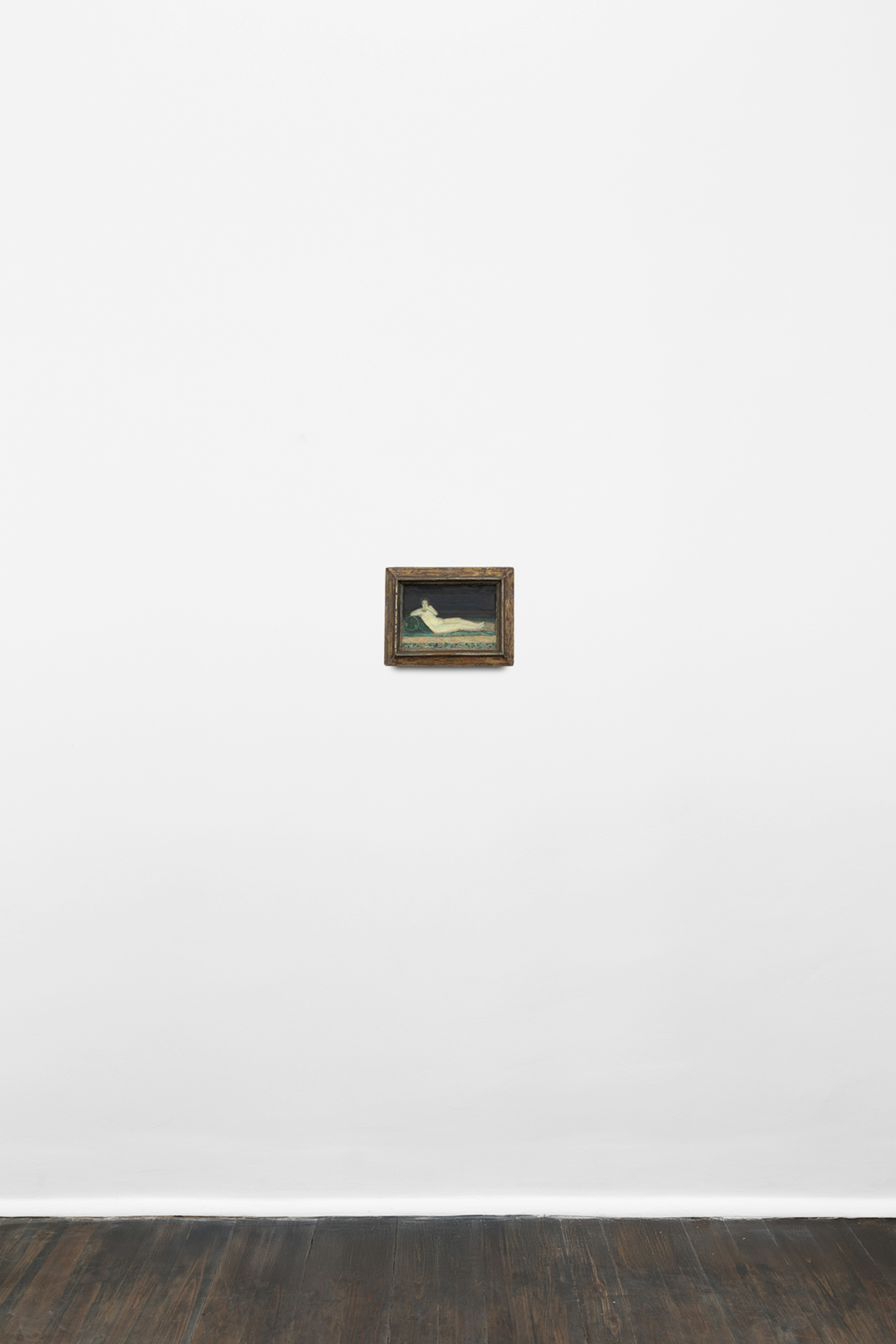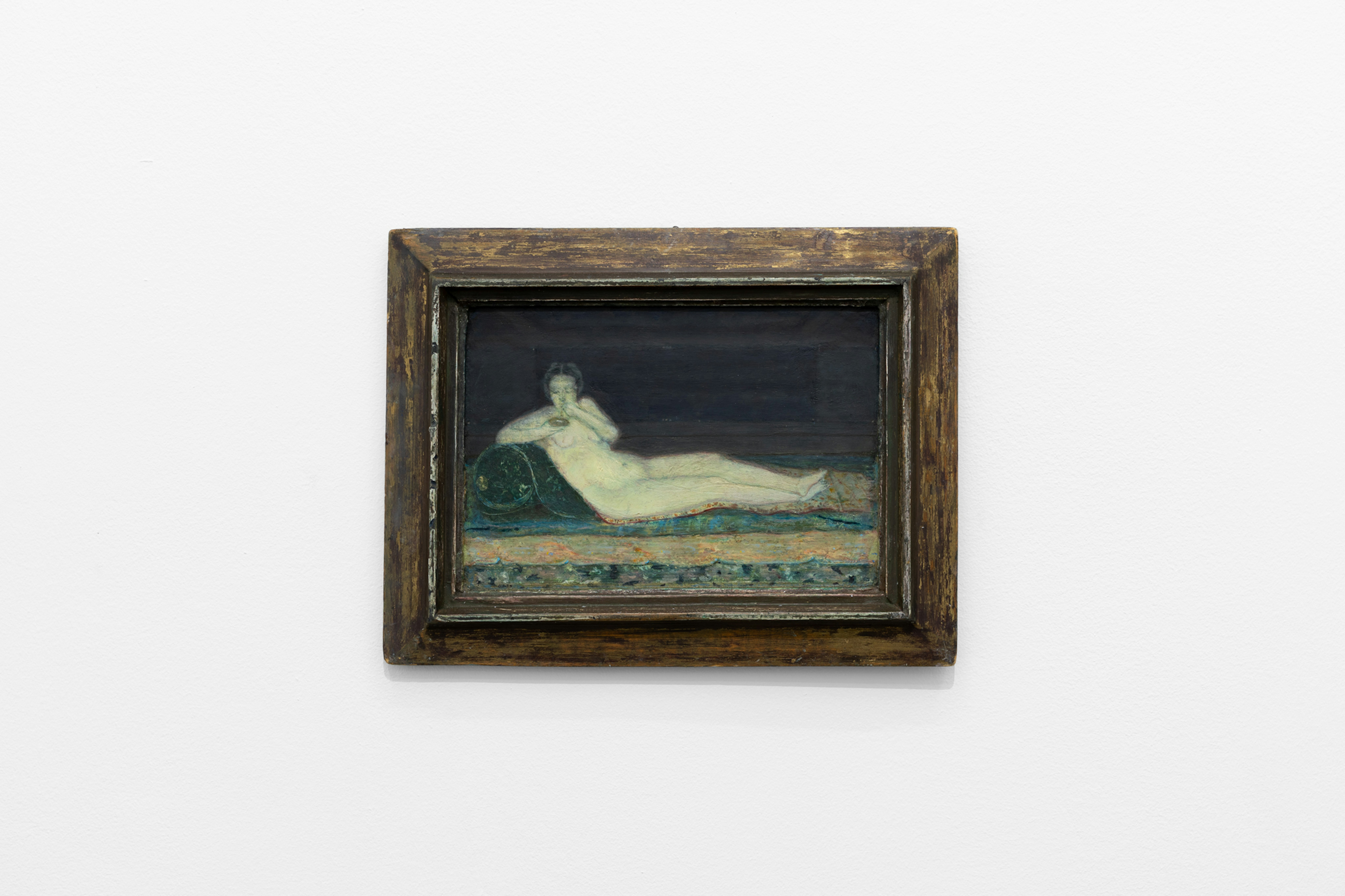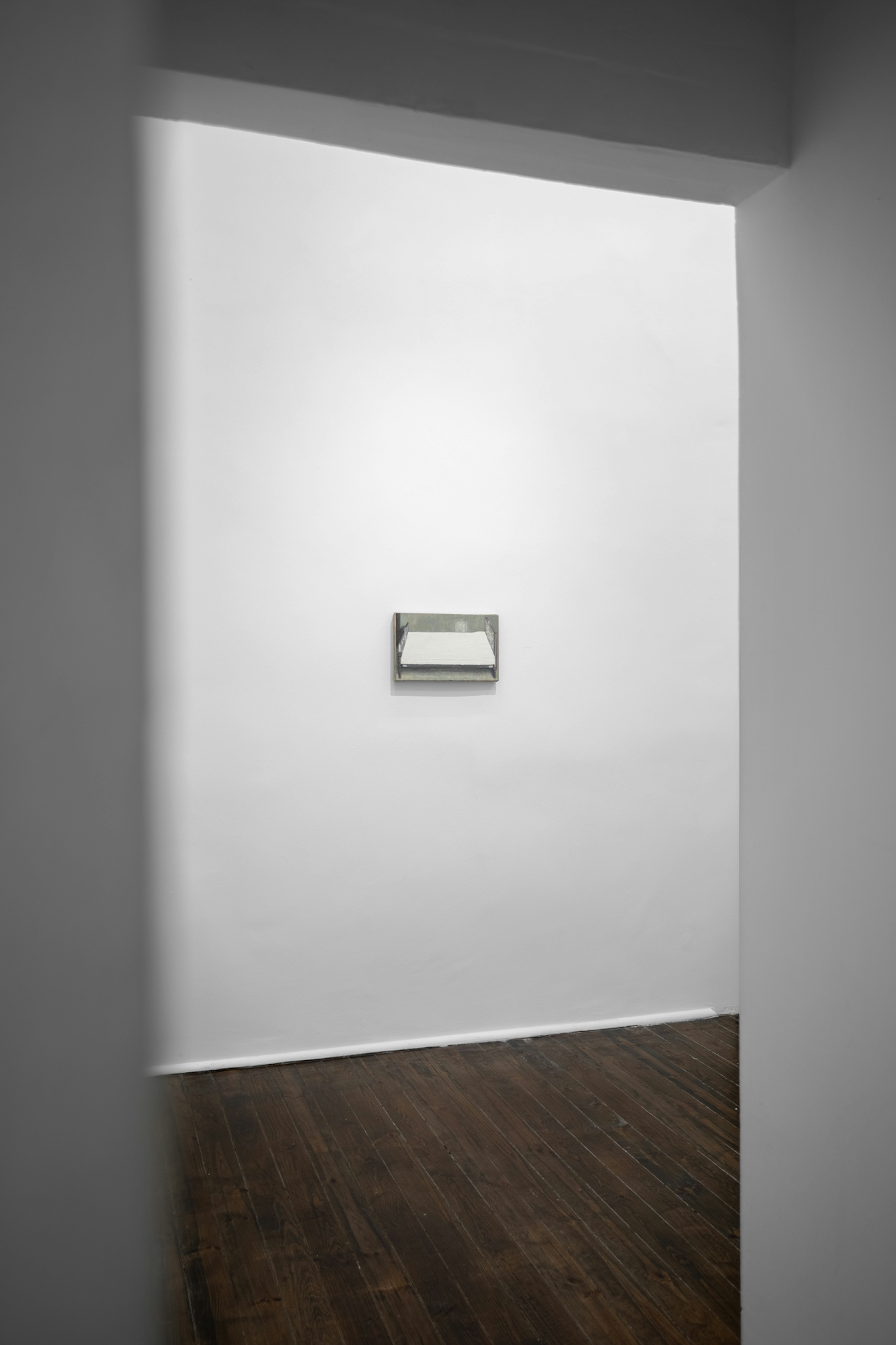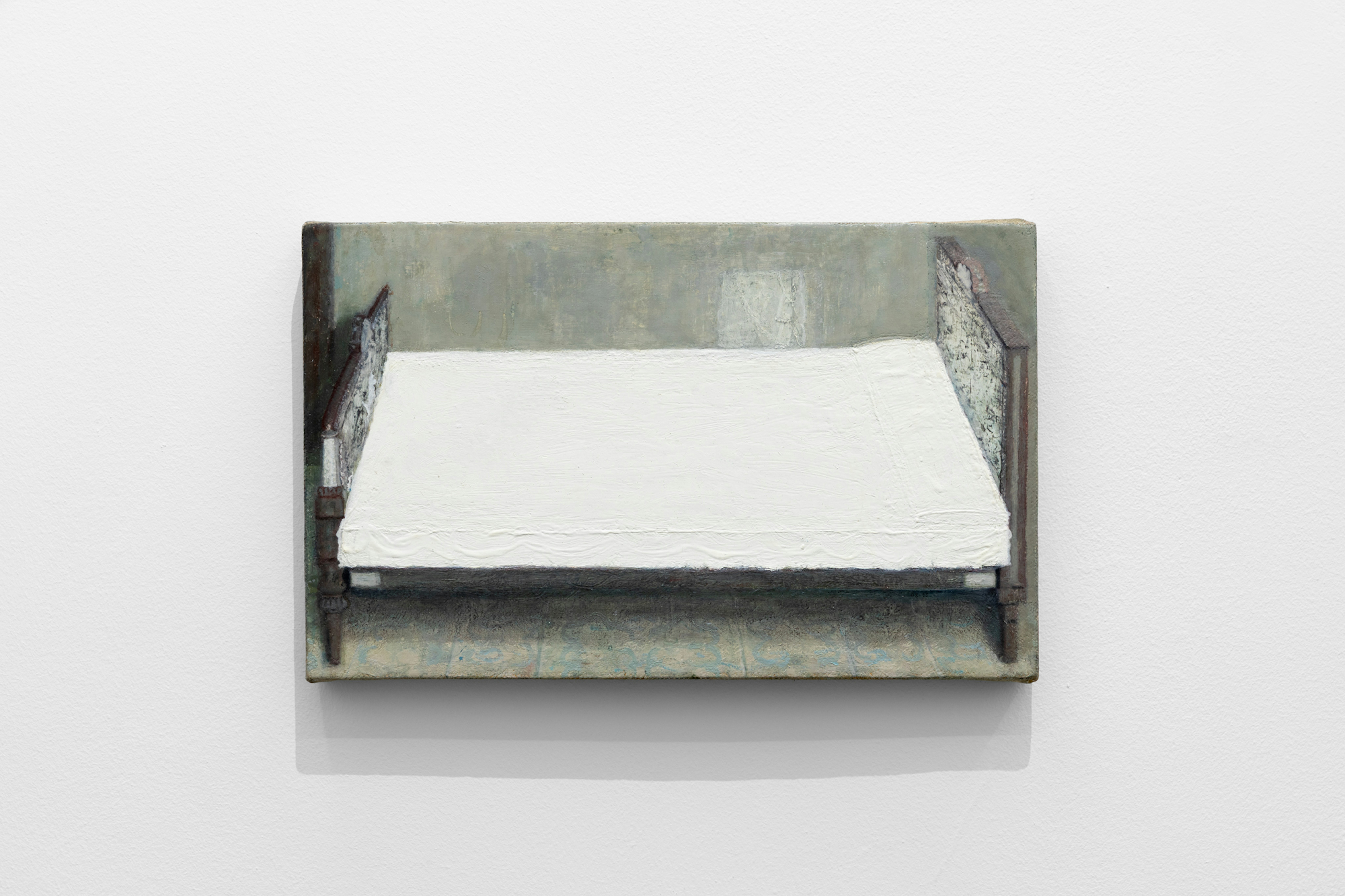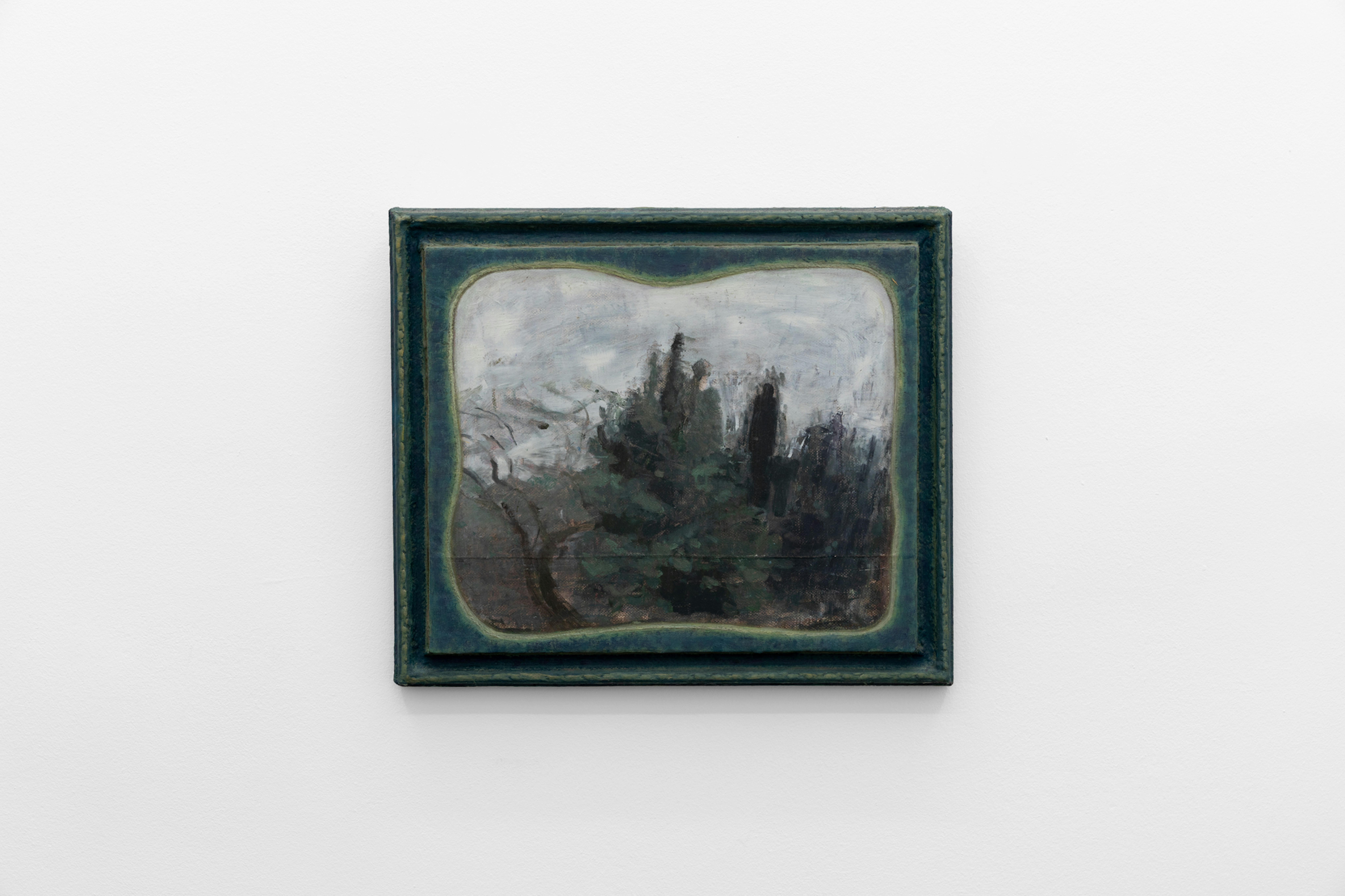ADZ
Rua do Crucifixo 28, First Floor, Lisboa
Wednesday–Saturday 11–5pm
info@adz.gallery
+351 932 989 202
Gallery Mailing List
Omri Sudri
Passages
Opening reception; Thursday, February 13th, 7-10pm.
‘The sun shone, having no alternative, on the nothing new.’
Samuel Beckett, Murphy, 1935
Omri Sudri’s paintings are ones of absences and ellipses: fleeting visions, faceless figures, and cryptic parables. While primarily, the works take intuitive departure from the artist’s emotional state, Sudri’s compositions are also products of the artist's memory and a rich legacy of modernist, realist, and classical thought. Painted in a limited palette of chalky white, velveteen navy, and moody ochres, the works present dispassionate portals into distinctly charged, aesthetic premises. Hazy figures, vacant spaces, and distorted perspectives evoke a dream-like restraint, as if seen through misted glass. Balancing a delicate interplay of technique, emotion, and composition, the works in Passages create ruminating corridors of thought.
In Adva, a work that draws lineage from works such as Venus of Urbino, Manet’s Olympia, Ingres’s Odalisque, and Fra Angelico, a hazy figure reclines atop a background tinged with blue. Adva—Hebrew for the foam of waves—makes reference both to the substance the figure ingests and the carpet frothing underneath, layering the work with a latent psychology. The work creates a sense of bathos by diverging from the Odalisque tradition, presenting the central figure as content in their solitariness: where in Manet’s Olympia, the protagonist’s defiant stare casts a viewer as an implied third figure, in Adva the woman’s indifference shifts our understanding of the voyeur.
Painkiller exudes a sense of expectancy, dominated by the expanse of a yawning white mattress. The composition is tightly cropped around the bed’s wooden frame, evoking a feeling of confinement. The artist references both Antonio López García’s A Dreaming Woman and his own frustrations with creative inertia, embodied in the act of lying supine. López García’s work, steeped in magical realism, blurs the boundary between dreaming and death. Similarly, Painkiller constructs a compact, silent space, shaped as much by absence as by presence. The stark whiteness of the bed contrasts sharply with the mottled surroundings, perhaps mirroring the isolating intensity of pain. As contemporary essayist Elaine Scarry observes, pain is unshareable—an idea that lingers uneasily in the work’s title.
Other works, such as Perineum’s Disaster draws inspiration from Andrea Mantegna, Piero della Francesca, and Paolo Uccello. The artist first conceived the work while reading Paradise Lost, particularly the depiction of Sin and Death, the offspring of Satan. The piece’s horizontality and shadowed mountain peaks remove from the brutality of the scene, while the sky—described by the painter as ‘indifferent’—looms impassively. A stark, Beckettian sun hangs overhead, not by choice but by necessity. The work evokes purgatory, a space of endless suspension, steeped in biblical themes of punishment, exile, and futility.
In all of Sudri’s paintings, there is a sense that if we were to look away, the figures in the composition would continue, much like thoughts continue to percolate in the subconscious while the waking mind operates. Each work moves within a world of its own interior logic, defying exegesis, and delighting in its singularity. The exhibition’s title, Passages, makes latent reference to this, nodding to passing thoughts, and a dispassionate drive in which questions are posed but answers remain just out of reach.
Written by Lydia Earthy
